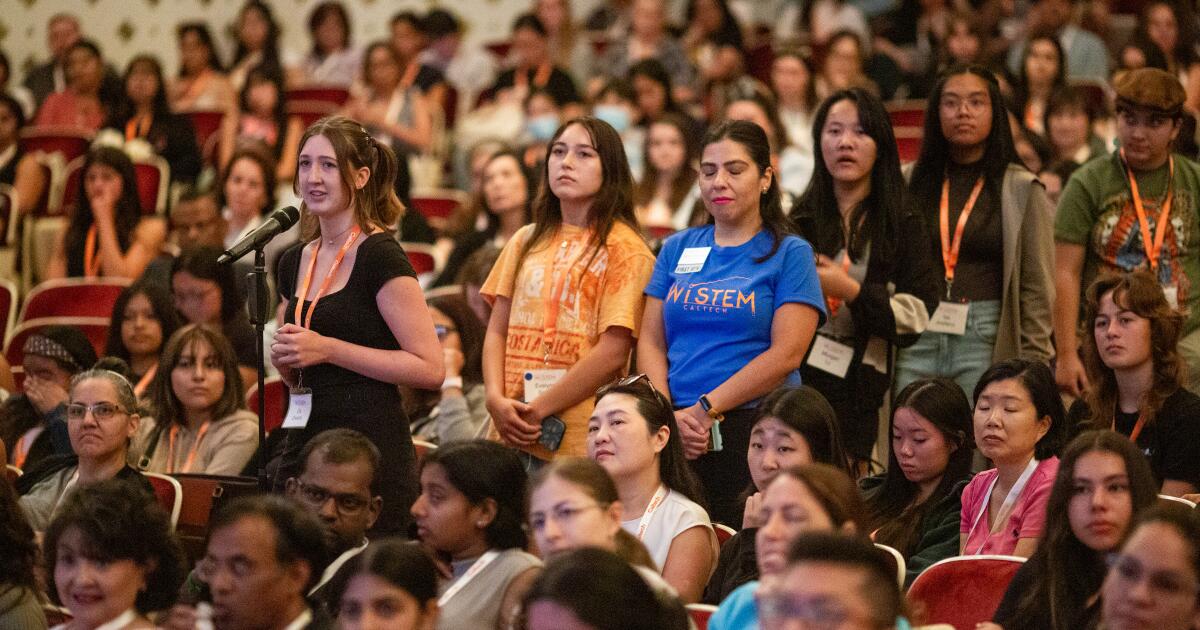In a milestone breakthrough, more than half of Caltech’s incoming undergraduate class this fall will be women for the first time in its 133-year history. The class of 113 women and 109 men comes 50 years after Caltech graduated its first class of undergraduate women, who were admitted in 1970.
…
Caltech isn’t the first educational institution to reach gender parity in STEM. Harvey Mudd College, a small private institution in Claremont, was an early leader in diversity — a key goal of former President Maria Klawe, a computer scientist and mathematician who stepped down last year after a 17-year tenure. The college enrolled more women than men in 2010 for the first time in its history and in 2014 graduated more women than men in engineering. Today, women make up 52.8% of majors in computer science, 50.5% in engineering and 68.2% in mathematical and computational biology.
At UC Berkeley, another powerful producer of STEM graduates, nearly half of students majoring in those fields identify as women or nonbinary, but the field they enter varies significantly. They make up more than two-thirds of students in biological and biomedical sciences, but about one-third in engineering, computer and informational sciences, and mathematics and statistics.
…
But even as more women study science, technology, engineering and math, they remain significantly underrepresented in the related workforce. Women hold about 45% of STEM degrees but make up only 28% of the workforce in those fields, said Blackwell of the American Assn. of University Women. Many women face unwelcoming “masculine cultures,” she said, and some experience gender discrimination and opt to leave the field.


